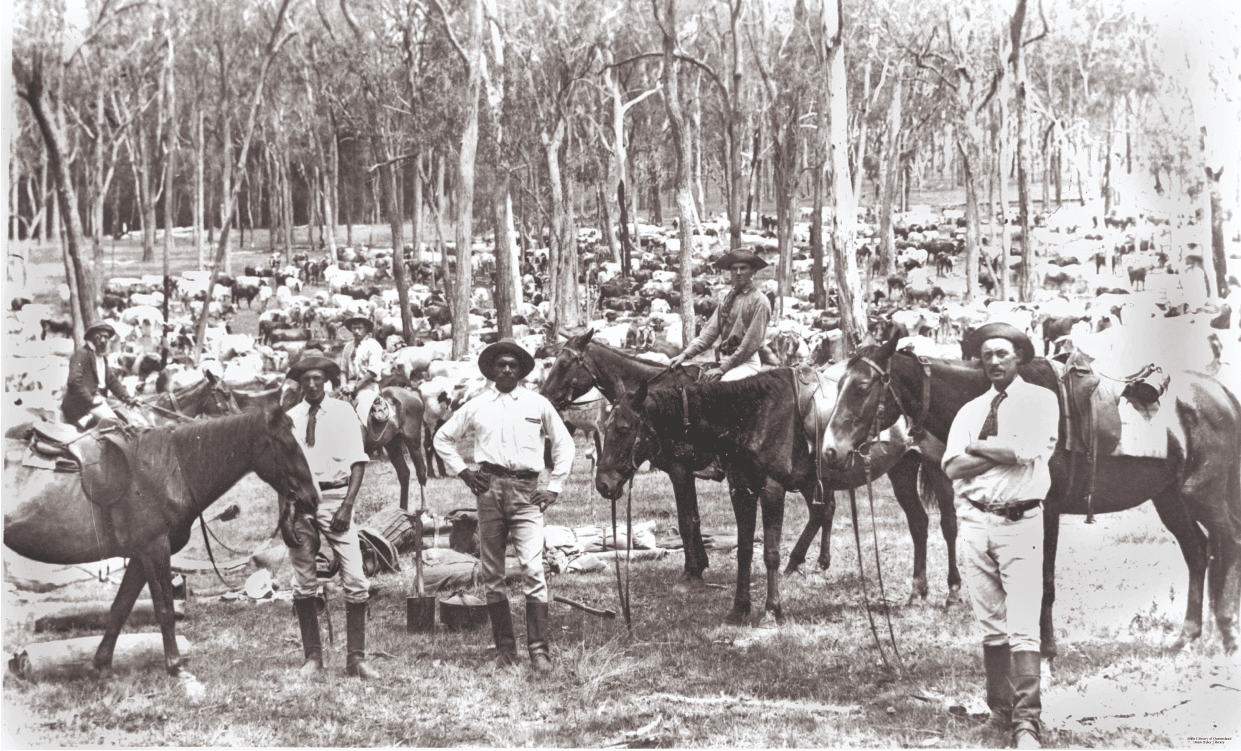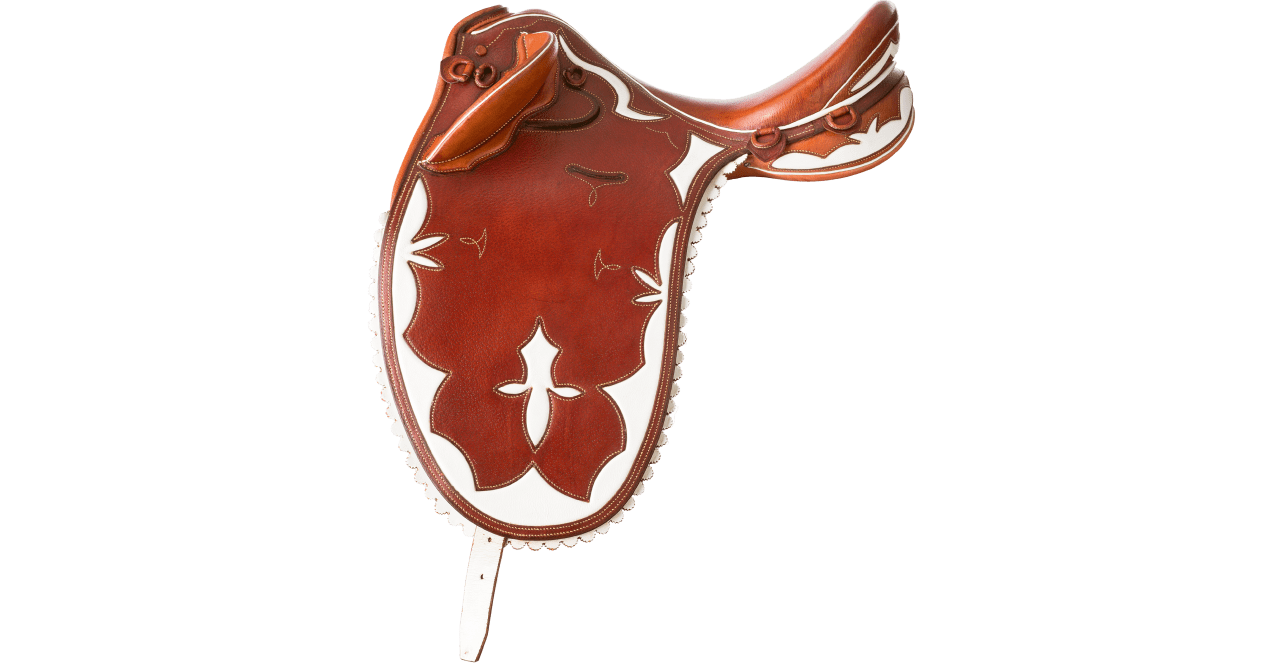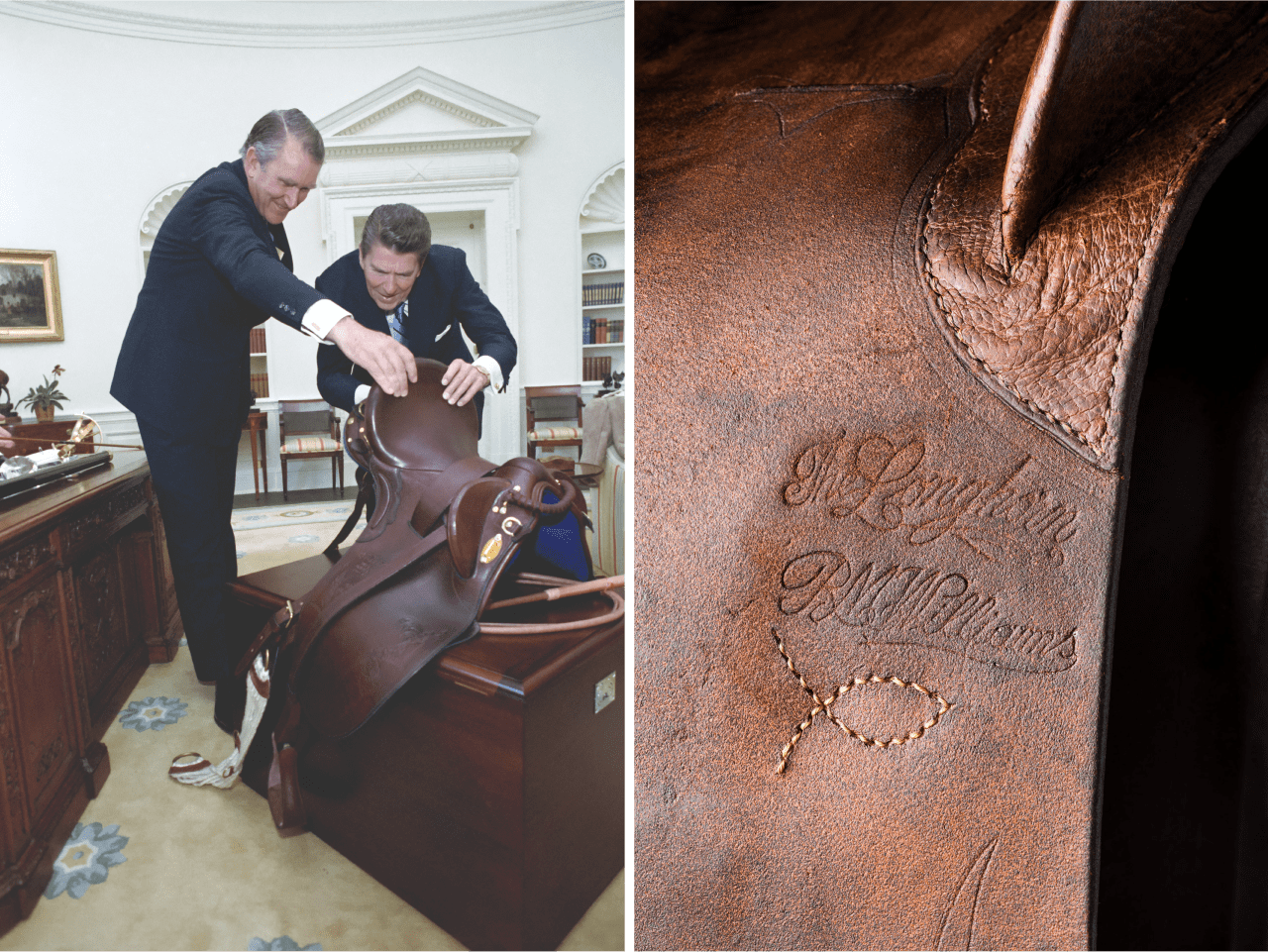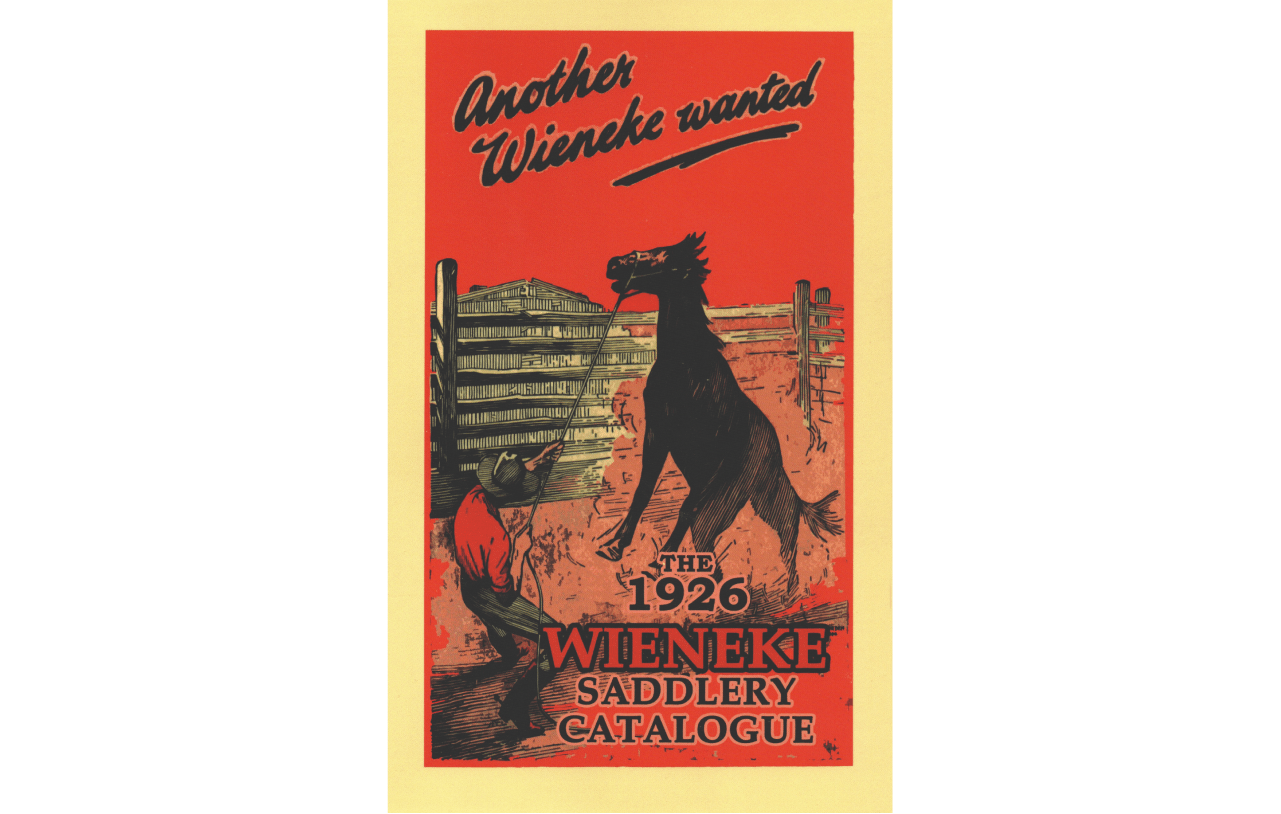
Armchair of the bush
The creation of the Australian stock saddle was quite the wild ride.
STORY FIONA CARRUTHERS | OUTBACK MAGAZINE
In 1981, a Syd Hill Suprema Super Drafter saddle ended up in the world’s most powerful office, when Prime Minister Malcolm Fraser gifted it from the Australian people to US president Ronald Reagan – presenting it to him in the Oval Office of the White House in Washington DC.
Both were keen horsemen and land owners, and it made for a brilliant photo opportunity as the two leaders admired the fine craftsmanship. Virtually from the minute it was created, the Australian stock saddle became an icon. Dubbed “the armchair of the bush”, its long flaps, wide dished seat, distinctive mustard yellow or royal blue serge underlining, and bold kneepads screamed ‘Made in Australia’.
Fraser’s choice of gift placed its home-grown symbolism on the world stage. “It was barely 100 years old by 1981, but it had become the much-loved national saddle, and it represented a way of life in Australia, also evoking the qualities – like toughness and a pioneering spirit – of those who rode in it,” says Michael Drapac, Victorian horse owner and developer.
Michael has spent the past decade amassing the world’s largest collection of Australian stock saddles with more than 200, the best of which form the Drapac Collection. Dating from the 1800s to the contemporary era, some are on loan to museums, including The Rare Trades Centre at Sovereign Hill in Ballarat, Vic.

Embellished traditional Australian stock saddle by Cecil Bercene, c. 1970s. Photo by Matthew Stanton.
He’s also funded a book* recording the saddle’s history. “You talk to knowledgeable horse people anywhere in the world and you’ll find that a well-made traditional Australian stock saddle is appreciated as one of the most comfortable saddles you could ever ride in,” he says. “It’s also designed to be kind on a horse’s back. Hence, a few mounted police units in the United States still use them, as do many other organisations.
“I’ve ridden in them since I was a kid, but when I began my collection over a decade ago, it struck me that there was no real history on how this national saddle evolved. As my good friend, and the founder of Black Inc publishing Morry Schwartz said: ‘There are not many authentic Australian stories that haven’t been told – but this is one of them.’”
As it turns out, the creation of the Australian stock saddle was quite the wild ride. Bush folklore has long sprouted the idea that Jack Wieneke was the “father of the Australian stock saddle,” as RM Williams once described him.
When RM began his empire in the 1930s, he produced a version of the Wieneke. “Jack Wieneke’s saddles were different,” he said. “He altered the ideas that came from England with the immigrants and developed a saddle more suited to the galloping scrub runners of the brigalow.”
The child of German migrants, John Julius ‘Jack’ Wieneke was born in February 1863 in Queensland. By the 1880s, he had created his famed Outlaw’s Master. Before riding in a bronc competition in NSW – aboard a “coal black vicious brute known as Raven” – Wieneke reportedly called out: “Don’t be afraid gents, I’m alright in this saddle – I made it myself.”
Raven failed to shift him, and a legend was born. In 1926, the illustrated colour poster “Another Wieneke Wanted” spoke to their popularity on big stations.

Prime Minister Malcolm Fraser presenting a Syd Hill Suprema Super Drafter poley saddle to President Ronald Reagan at the White House in 1981
Wieneke was an early and supremely talented saddle maker with a clear eye for design, and plenty of marketing nous. In many ways, he was the forerunner to the R.M.Williams’ empire, using mail order catalogues and the bush telegraph to promote his wares far and wide.
But the modern-day stock saddle was not his work alone.
Original documents show that hundreds if not thousands of saddlers worked primarily in Australia and England (mainly in the old trades’ town of Walsall, in West Midlands County), tweaking and developing the design as they went to meet growing demand for a sturdy saddle that was better suited to Australia’s harsh climate, the long distances needing to be covered – and the fearsome buck of the local horses.
“I trawled through newspaper articles and documents from the early 1800s on, only to discover the Australian stock saddle was a prolonged work in progress by saddlers working primarily in Australia, but also in the United Kingdom and Europe,” says Janice Gifford, the principal researcher for Wild Ride: The Story of the Australian Stock Saddle.
“There really was no sole creator. So many people – from highly skilled saddle makers to horse owners with no formal training – were amending saddles to improve the ride.”
Saddles and harnesses were shipped in aboard the First Fleet in 1788. But early imported saddles came under fire for being too slight (park or English riding saddles with their “frying pan seats” that were virtually flat), or too heavy and cumbersome in the case of cavalry saddles.
“A light English saddle was basically suicide in the Australian bush,” says NSW saddler and former bronc rider, Dave Rogan. “It gave you zero protection and was little help when a horse really started to buck out the back of beyond.”
Diary entries and letters indicate how white settlers were struggling to adapt their leather goods. As you might expect, in a penal colony populated mainly by poverty-stricken convicts, news reports about the theft of saddles also provide fascinating pointers as to what was developed when, particularly when said reports cite “peculiar” new knee pads appearing on saddles.
Initially, knee pads were up to 10 inches (25.4cm) long and anywhere from 2–7 (5.08–17.78cm) inches high. They were positioned at the front of the saddle flap, resting against the rider’s upper thigh, extending down to just above the knee.
In 1856, a £20 reward was offered for the return of a brown mare and her tack, stolen outside the Bank of Australasia in George Street. Intriguingly, the saddle was described as “much worn, with a slight tear on one of the knee pads”.

Another Wieneke Wanted, John Brush catalogue 1926.
“That’s significant given the emergence of knee pads was a defining feature in the creation of the Australian stock saddle,” says Janice, adding “And it’s from 1856, well before Jack Wieneke was born [in 1863].”
In 1859, the migrant British pioneer grazier and explorer Ernest Henry (1837–1919) of Queensland wrote home to his father asking for modifications to future saddles he sent out from England – including that the “saddle flaps be cut further forward”, and the “kneepads should be twice as large with three times as much stuffing”.
The Sydney Morning Herald ran a story in 1865 detailing a robbery near Bathurst, NSW, mentioning the theft of a “peculiar saddle having large knee pads”, while an 1867 robbery near Goulburn describes the saddle as “an old one, new flaps having been attached to an old seat, and new kneepads sewn on”.
The Queanbeyan Age reported in 1868 how police had confiscated the horses and gear of a captured bushranger, re-possessing a “first-class hog skin saddle, splendidly made, with a seam in the top of the kneepad”.
Janice’s husband, award-winning saddle maker Tony Gifford, points out that the seam in the top of the knee pad means “that it had to be a stand-up knee pad as we know today, not just a slightly larger park saddle swell or roll”.
By the 1860s, innovative colonial saddlers were being named – such as Wagga Wagga’s William A. Mitchell, hailed by local press for “making a new style of saddle with knee pads”.
James Robb of Hobart struck on a “style of saddle that is entirely new to the colony” with “a comfortable seat, and comfortable kneepads”, The Tasmanian Times announced in 1868, adding, “It would seem almost impossible for the most inexperienced horseman to be thrown out of these saddles”.
Fresh shoots of national pride shine through in many early reports, which invariably praise locally designed and made over imported. By the late 1800s into the early 1900s, giants of the saddlery trade such as J.P. Talty and John Brush & Co. in NSW had got going, as had George Woolnough of Tenterfield near Armidale: George was immortalised in song by his grandson, Peter Allen.
In Queensland, you had Syd Hill and Wizard Smith well established, along with Kinnear’s in Victoria, and the Holden family in SA, plus George Bates in WA. Hill’s and Bates’ endure today, while the Holdens segued from saddles and harness into cars in the late 1940s.
R.M.Williams also created among the most enduring stock saddles on the market, including the Longhorn, Colt Poley, and Gooseneck Poley; examples of all three styles are contained in the Drapac Collection.
In 1937, author and horseman John Jackson Hardie declared: “We have almost revolutionised the old pattern [of saddle first brought out to Australia]. “The pommel and cantle have risen to form a dipped seat, the stuffed flaps have given way to a long, deep flap that moulds itself to the rider’s leg, and all manner and size and shape of kneepads have risen to give comfort and support.” And no doubt, hundreds of thousands of Australian horses sighed with relief that their backs were saved.
* Fiona Carruthers is the author of ‘WILD RIDE: The story of the Australian Stock Saddle’, published by Black Inc in May 2023, RRP $59.99.